Pictures of your child on YouTube, discriminatory statements in comments, nasty jibes in the Messenger group or forbidden symbols: Content on the Internet can cause trouble for many reasons. However, they don’t appear anywhere on the web, but concretely on platforms, apps and websites. And there you can also report this.
Providers try to set rules and monitor them to the extent they can. There are even laws for this, such as the Youth Protection Act. When content is reported, the platform must check within a short time whether it is punishable content and delete it. For this, the platforms depend on the participation and help of the users. Whether on YouTube. WhatsApp, Instagram or TikTok: Everywhere, you or your child can report content that may violate platform policies or a law. For example, reporting racist content has increased dramatically in recent years, according to YouTube and Facebook.
Reviews and comments from other users or parents can also be helpful with apps or games if you are unsure if they are suitable. For example, the app stores often indicate when there are a lot of ads or in-app purchases, or when a game is very violent. If you or your child have had your own experiences, or if content seems suspicious to you, share it with others, taking advantage of this valuable opportunity to support each other.

© photothek.net
As your child reaches adolescence, it becomes increasingly difficult to direct him or her to appropriate media content. Most young people want to distance themselves from the parental home during this time and orient themselves more to their peers and to youth cultures. These also strongly influence interest in and use of media offerings. However, it is still important that you stay in conversation with your child and keep saying that some media content is only allowed from the age of 16 or 18 for reasons of youth protection.
At the same time, try to share media and let your child show you exciting content. The older it gets, the more it also moves on a similar level to you in terms of understanding content, humor or the like.
In the toddler age clearly better symbolic understanding is shown. Toddlers act out their own stories – alone or with peers. Typical of this is the “father-mother-child” game. Such games are important for children’s development: it increases social skills and strengthens, for example, attention, speech, imagination, and later also writing and reading skills. Many child-oriented films and television content take advantage of this: they show fictional worlds that children often act out themselves afterwards.
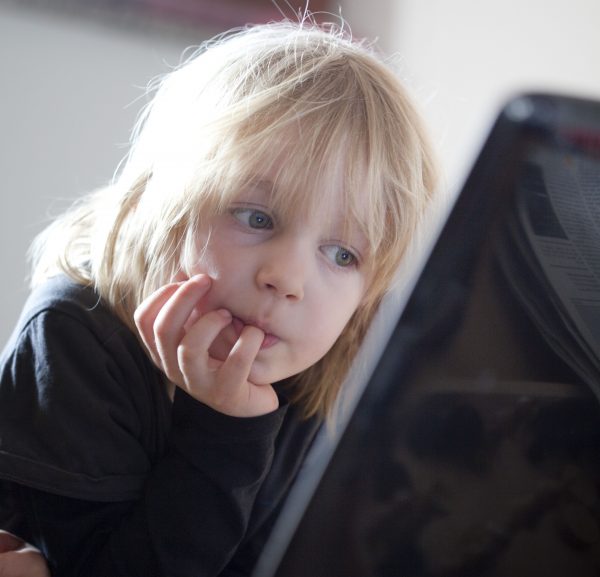
© photothek.net
Media competence also benefits children later, at school age! If children understand media symbols well, they can also learn language and mathematical content more easily in preschool and make better use of learning media.
The Internet, i.e. websites, do not yet play such a large role for preschool children compared to other media activities. The children use media for information about the living environment and for orientation for their own position in friendships and family. Educationally valuable media programs can provide assistance. You should make sure that the programs children use are also age-appropriate and do not teach behaviors that are harmful.
If you want to support your child in using media so that he or she can acquire digital media in a meaningful way, you should consider when this makes sense and what the support might look like. Moving beyond the daily read-aloud book to cinematic sequences or picture stories can be a start.
Apps that have been programmed explicitly for children are particularly suitable as an introduction to online worlds: As a small, self-contained program, they offer clear content. Navigating here also works via finger movement or voice input. At the same time, the childlike preference for repetition is practiced. Be sure to establish rules about usage time and frequency early on. Ideally, you should test the app beforehand and possibly play through it. Find out exactly what apps you install for your child. Important aspects here include advertising and possible in-app purchases. You can also use test reports as a guide.
Good children’s apps are characterized by the following features:
An overview of recommended apps for children is difficult due to the rapid changes on the web. However, you can find help at the German Youth Institute (DJI), at klicktipps or at SIN – Studio im Netz, among others.
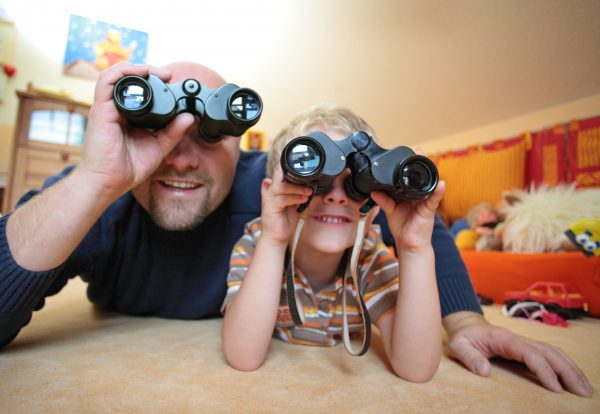
Copyright: U. Grabowsky/photothek.net
Media can inform and entertain. They are meant to bring joy, not fear. Whether it’s video, audio, images, text or games, media comes in many different forms. Children can learn to deal with media in a meaningful way through various offers. This is also possible with computer games. Responsible use of media is important in order to be more protected from dangers on the Internet. Your child can learn this only with your help.
It’s also up to you what media your child uses and how they use it. Help him to do so! Dare to try new media for you, too. If your child has a particular interest in an offering, the best thing you can do is explore and understand that offering with your child.
There is a suitable media offer for almost every concern. Our article ” How can I recognize a good children’s site?” will help you find media content suitable for children. Or take a look at which offerings have received the Educational Media Award in recent years.
After picture books and TV, mobile devices such as smartphones and tablets are among the first media that children get to know. After all, they are present in their lives from the beginning because mom, dad, big sister, grandpa and dad’s girlfriend are constantly holding them. The importance of these devices is not lost on the little ones. Plus, they glow so beautifully and make noise. This also fascinates young children. After all, they are quickly turned on and easy to use. You don’t have to be able to read, but can start a small program very quickly via the icons. And then you can easily take such a device with you to the cozy corner or in the car.
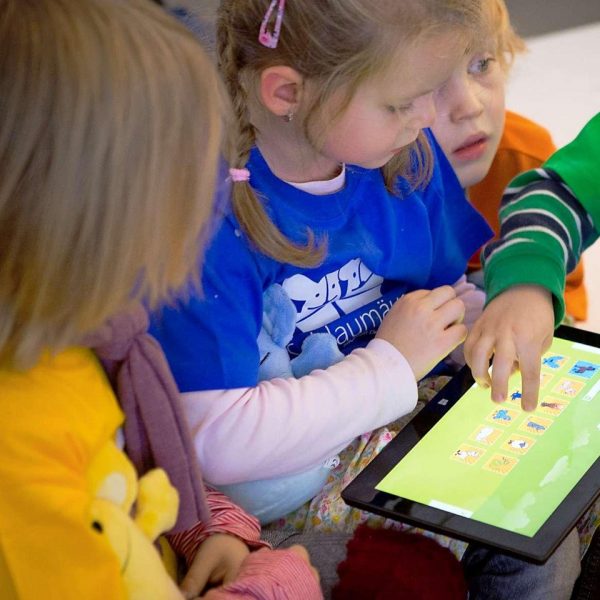
© photothek.net
The fine motor skills of young children are not yet fully developed. Hands and fingers are clumsy and hand-eye coordination is just developing. Operating a tablet is much easier for them than using a keyboard and mouse. But before they are about 18 months old, the little ones can not actively do anything with it. However, tablets can already serve as a digital read-aloud book that you read from.
The linking of different senses is promoted within appropriate children’s activities. From the age of about five, for example, children can acquire important motor and mental skills in online games. Especially for small children, there are many offers on the Internet that limit access to content on the Internet and thus usually do not allow unprotected surfing. Make sure the content of such offerings is appropriate for your child’s developmental level and age.
Children are fascinated by the Internet and the infinite information. No matter what you’re looking for, there’s a page for it. However, adult search engines are often used. Not least due to still insufficient research skills, however, children are confronted there with a confusing abundance of results that they can filter only with difficulty. They may also encounter results that are sometimes unrelated or inappropriate to their search.
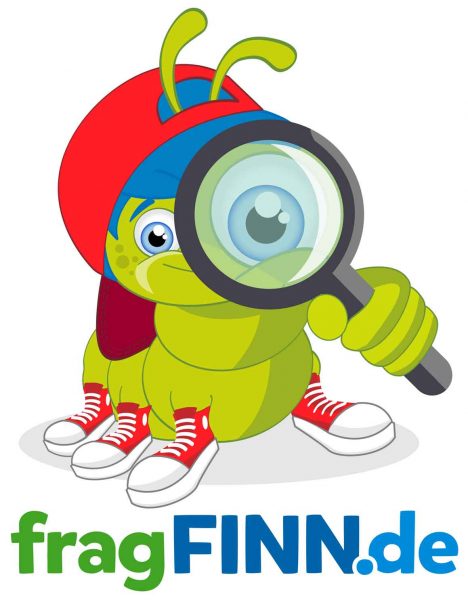 To protect children, there are search engines designed specifically for them that allow them to take their first research trips unaccompanied by adults. Search engines for children, such as www.fragfinn.de or www.blinde-kuh.de, differ in essential characteristics from the usual search engines. This is especially true for the design, preparation and handling of problems. Texts, images and videos are pre-screened against specific criteria and then approved. Thus, they are safe and interesting for children at the same time.
To protect children, there are search engines designed specifically for them that allow them to take their first research trips unaccompanied by adults. Search engines for children, such as www.fragfinn.de or www.blinde-kuh.de, differ in essential characteristics from the usual search engines. This is especially true for the design, preparation and handling of problems. Texts, images and videos are pre-screened against specific criteria and then approved. Thus, they are safe and interesting for children at the same time.
These offers are aimed at children from about 6 to 12 years. Starting around fifth grade, children should be gradually introduced to adult search engines.
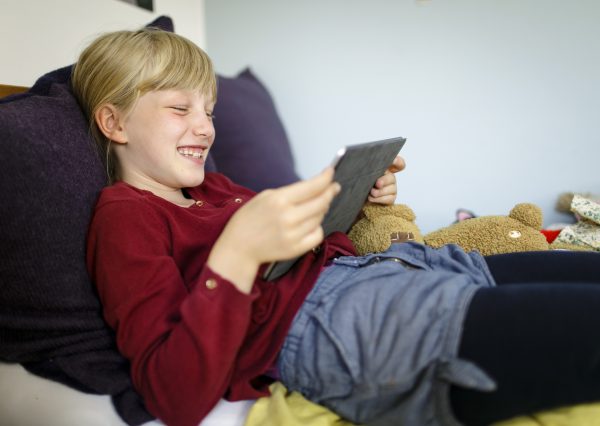
Copyright: Photothek.net
Children also want to surf the Internet. Since they have different interests and needs than adults, there are websites for children. It’s very important to give children ways to find content on the web quickly and easily at an early age. These opportunities should be both interesting and age-appropriate. Germany has a remarkable and unique children’s website landscape. The websites are regularly maintained and are tailored to the needs of children. Here, children can find out about world events or their hobbies and research many other topics. You can play games, meet friends, share or produce your own pictures, videos and even web pages. In this way, they get to know the Internet in all its diversity – in an age-appropriate Internet world. As adults enter secondary school, Internet services become more and more interesting. Your child should be introduced to them slowly and learn to use them safely.
You can find good children’s sites at seitenstark.de. You can find out how to recognize a good website for children here.
Preschoolers love pictures, sounds and they like to touch things. They also need repetition – this applies to play in the nursery just as much as it does to media use. Repetition gives them security, stability and orientation.
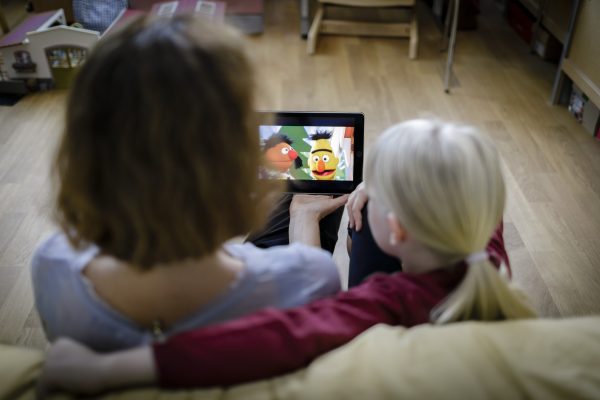
Copyright: Janine Schmitz/photothek.net
The most suitable offerings are therefore those that appeal to all the senses with simple user guidance and lots of sounds and images, while at the same time linking learning elements in a playful way. These can be accessible on the tablet as well as via the family computer. Your first experiences in the online world should be made together with your child. When doing so, avoid cluttered websites and apps. Because they cannot yet read, understand or operate everything, it is difficult for young children to grasp complex game play. If your child is bored or wants to learn something new, you can discover more offers from time to time. But children can look at things again and again and experience them anew. They do not get bored in the process. Tips for good children’s sites can be found at seitenstark.de. You can learn more about suitable apps here. Check out the offerings on your own first before exploring them with your child.
The first two years of a child’s life are characterized by the development of perception and discovery of the environment. Of course, media are also part of this environment. Babies first perceive them in the same way as other objects. Little by little, they recognize the medial in these things, for example, by mom or dad looking at a picture book with them.
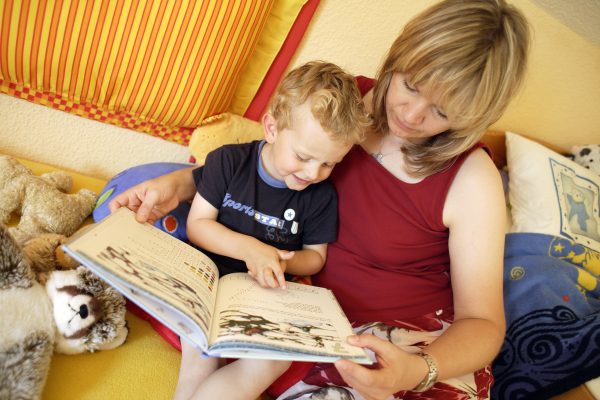
© photothek.net
Young children learn best when they can experience a stimulus on more than one sensory organ at a time. For example, when they are exploring a picture book, it helps your child a lot if they look at the book with you and you talk about it with them. When you name objects, children learn them faster.
From an early age, children want to communicate and express themselves through language. Even very young children prefer complex sounds that resemble speech. Child-friendly music, audio books or singing together with parents help with language development.
Young children can recognize film footage at an early age. However, their attention span is still very short. At about 4 to 5 months, they can focus on moving images of 10 seconds or less. Even if this ability improves quickly, it does not mean that they understand filming and that it helps them learn.
Even in the second year of life, children learn better when they see an action for real. A good rule of thumb is that children should not watch more than 20 minutes of television per day between the ages of two and three. However, the exact time always depends on the particular family and especially the particular child.
The older the children get, the more interesting digital media such as smartphones or tablets become. From a very individual point in time, young children learn how to use smartphones, laptops and televisions from their parents and siblings.
They recognize mom or dad on cell phone pictures and want to look at them over and over again. The output of sounds, music or images on the smartphone becomes more interesting. So young children come into contact with digital content again and again. Contact should then not be generally prohibited by you and, if necessary, the siblings, but it should be reduced to an acceptable level.
It is particularly important that the first contact with media is well dosed, supervised and under constant supervision. Then media can also be very useful to young children.